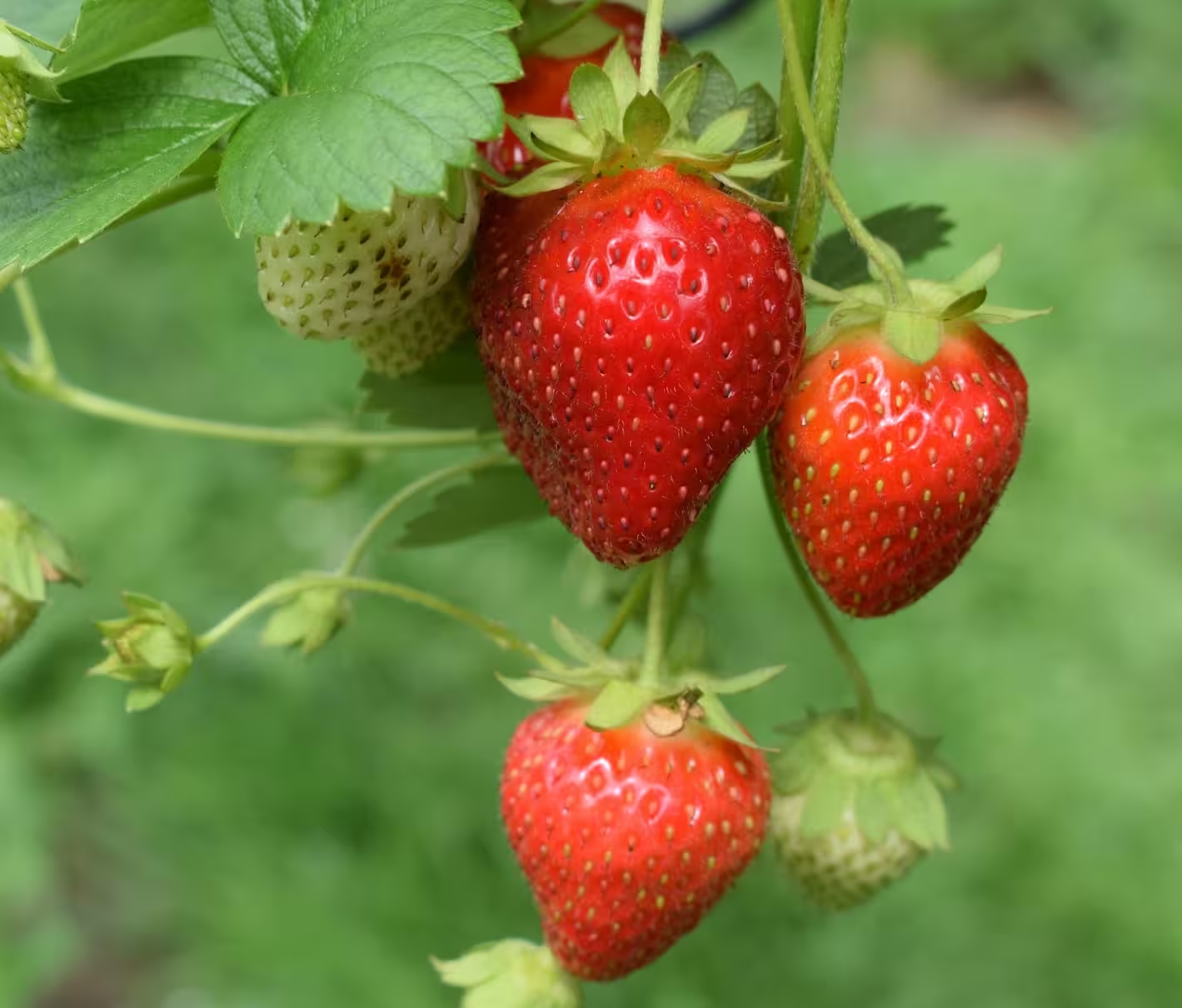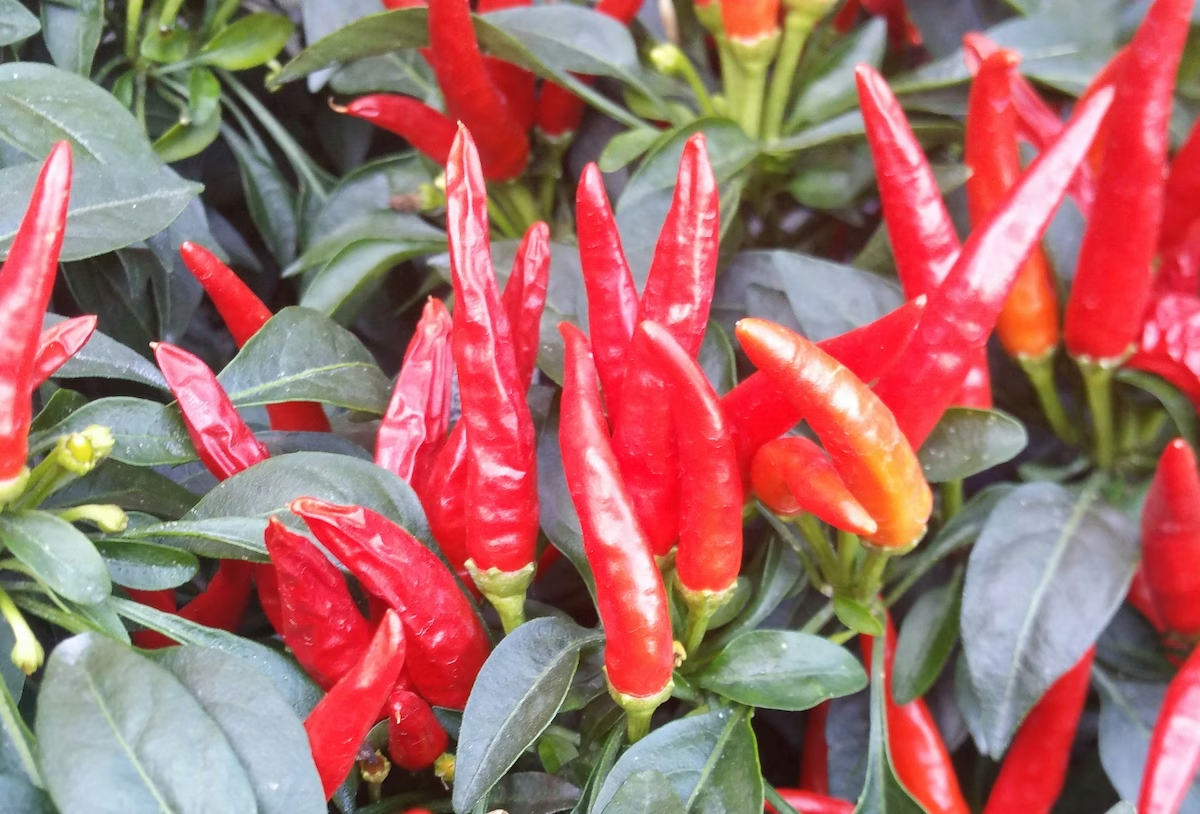Strawberry
Fragaria × ananassa
Strawberries are perennial plants prized for their sweet, juicy, bright red, heart-shaped fruits. They are enjoyed fresh, in desserts like pies and ice cream, jams, and preserves. They are relatively easy to grow in gardens or containers.

Quick Information
Planting Calendar
Growing Guide for
1 Plant Crowns/Transplants
Plant bare-root crowns or container-grown transplants in early spring, typically 2-4 weeks before the last expected frost. Prepare well-drained soil enriched with compost. Set crowns so the midpoint (where roots meet leaves) is level with the soil surface. Water thoroughly after planting.
2 Apply Mulch
Once plants are established, apply a 5-7 cm layer of organic mulch, such as straw or shredded leaves, around the base of the plants. This helps retain soil moisture, suppress weeds, keep fruits clean, and regulate soil temperature.
3 Water Consistently
Provide consistent moisture, aiming for 2.5-5 cm (1-2 inches) of water per week, especially during establishment and fruit development. Water the soil at the base of the plants, avoiding wetting the foliage and fruits if possible.
4 Fertilize Appropriately
Apply a balanced fertilizer (e.g., 10-10-10) lightly at planting time. Fertilize again after harvest (renovation) for June-bearing types. Avoid excessive nitrogen, which encourages leaf growth at the expense of fruit production.
5 Monitor for Pests and Diseases
Regularly inspect plants for common strawberry pests (slugs, spider mites, aphids, tarnished plant bugs) and diseases (gray mold, powdery mildew, leaf spot). Address issues promptly.
6 Harvest Berries
Harvest berries when they are fully colored (typically bright red) and slightly soft to the touch. Gently pick the berry with the cap and about 1 cm of stem attached. Check plants every 1-3 days during peak season.
7 Renovate Beds (June-bearers)
For June-bearing varieties, renovate the patch immediately after the harvest finishes (usually early-mid summer). Mow or trim the old foliage to about 2.5-5 cm above the crowns. Thin out weaker plants, remove weeds, narrow the rows, and apply fertilizer and water.
Explore More Plants

Tomato Fruit
Tomatoes are a warm-season favourite, prized for their juicy, flavourful fruits that elevate home cooking, fresh salads, and rich sauces. From tiny cherry tomatoes to huge beefsteaks, these versatile plants offer something for every gardener. Growing your own tomatoes gives the pleasure of harvesting sun-ripened, home-grown goodness straight from your garden, packed with taste you can’t find in the shops.

Chilli Pepper Fruit
Chilli peppers are the fiery fruits of the Capsicum family, known for their intense heat and use in various cuisines. They range in size, shape, and spiciness, adding a kick to dishes worldwide. They thrive in warm climates and require careful cultivation.

Sweet Pepper Fruit
Sweet peppers, also known as bell peppers, are a variety of Capsicum annuum prized for their large, mild-flavored fruits. They are used in a wide range of culinary applications, from salads and stir-fries to stuffed peppers and sauces. They require warm conditions and plenty of sunshine to thrive.